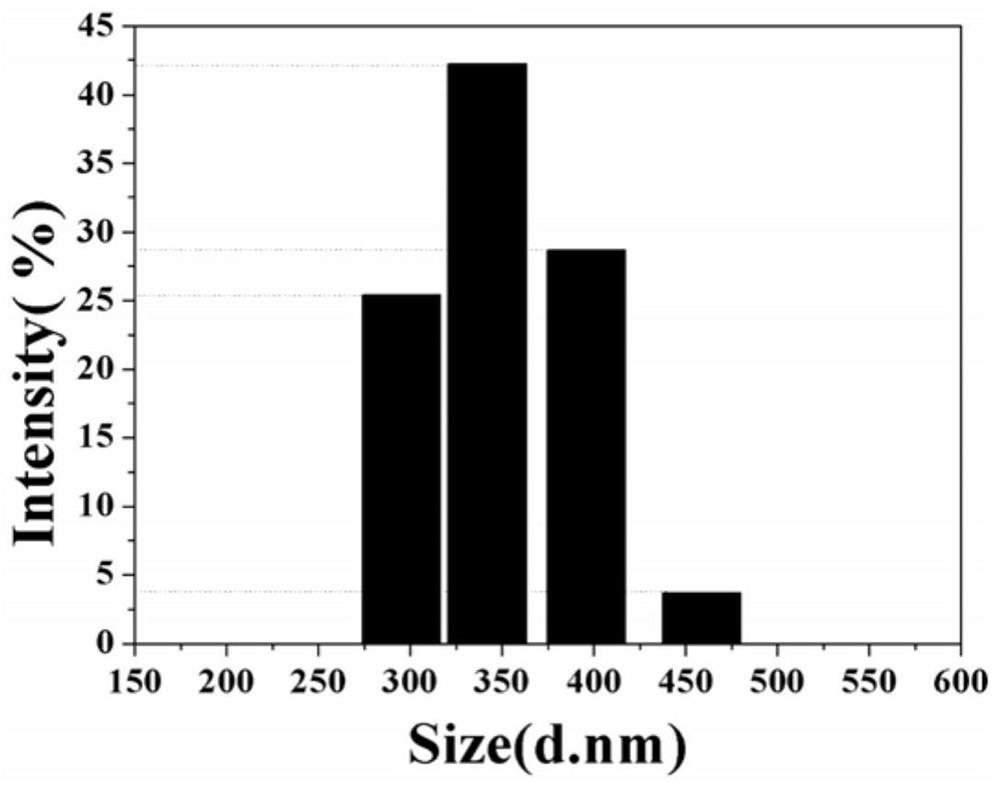A kind of lithium, sodium ion battery flame retardant and its preparation and application method
A technology of sodium ion batteries and flame retardants, applied in secondary batteries, circuits, electrical components, etc., can solve the problems of wide particle size distribution, high price, rapid battery temperature rise, etc., achieve uniform particle size, low production cost, Good flame retardant effect
- Summary
- Abstract
- Description
- Claims
- Application Information
AI Technical Summary
Problems solved by technology
Method used
Image
Examples
Embodiment 1
[0037] (1) Preparation of Al2O3 Flame Retardant by Alternating Current Electrochemical Method
[0038] Immerse the aluminum / graphite rod as the working electrode in 200mL of 2.5mol / L sodium nitrate electrolyte solution, the immersion area is 4cm 2 . Then set the AC voltage to 8V and the frequency to 50Hz for electrolysis. After the electrolysis is finished, the electrolyzed product is centrifuged, washed, dried and collected. Finally, under the protection of argon, the dried electrolyte was placed in a tube furnace and calcined at 450 °C for 2 h with a heating rate of 2 °C / min.
[0039] (2) Application of the prepared aluminum oxide flame retardant in lithium and sodium ion batteries
[0040] Respectively with 1.0mol / L LiPF 6 / EC+DMC (volume ratio 1:1) and 1.0mol / L NaClO 4 / PC solution is used as the reference electrolyte for lithium and sodium ion batteries. In a nitrogen-filled glove box, add Al per milliliter of Li-ion battery reference electrolyte 2 o 3 The quality...
Embodiment 2
[0046] (1) Preparation of Al2O3 Flame Retardant by Alternating Current Electrochemical Method
[0047] Immerse aluminum / platinum as a working electrode in 500mL of 1.75mol / L ammonium sulfate electrolyte solution, with an immersion area of 20cm 2 . Then set the AC voltage to 2.5V and the frequency to 70Hz for electrolysis. After the electrolysis is finished, the electrolyzed product is centrifuged, washed, dried and collected. Finally, under the protection of argon, the dried electrolyte was placed in a tube furnace and calcined at 500 °C for 6 h with a heating rate of 5 °C / min.
[0048] (2) Application of the prepared aluminum oxide flame retardant in lithium and sodium ion batteries
[0049] Respectively with 1.0mol / L LiPF 6 / EC+DMC (volume ratio 1:1) and 1.0mol / L NaClO 4 / PC solution is used as the reference electrolyte for lithium and sodium ion batteries. In a nitrogen-filled glove box, add Al per milliliter of Li-ion battery reference electrolyte 2 o 3 The quali...
Embodiment 3
[0054] (1) Preparation of Al2O3 Flame Retardant by Alternating Current Electrochemical Method
[0055] Immerse aluminum / aluminum as a working electrode in 800mL 0.75mol / L potassium carbonate electrolyte solution, with an immersion area of 60cm 2 . Then set the AC voltage to 18V and the frequency to 120Hz for electrolysis. After the electrolysis is finished, the electrolyzed product is centrifuged, washed, dried and collected. Finally, under the protection of argon, the dried electrolyte was placed in a tube furnace and calcined at 800 °C for 12 h with a heating rate of 8 °C / min.
[0056] (2) Application of the prepared aluminum oxide flame retardant in lithium and sodium ion batteries
[0057] Respectively with 1.0mol / L LiPF 6 / EC+DMC (volume ratio 1:1) and 1.0mol / L NaClO 4 / PC solution is used as the reference electrolyte for lithium and sodium ion batteries. In a nitrogen-filled glove box, add Al per milliliter of Li-ion battery reference electrolyte 2 o 3 The qual...
PUM
| Property | Measurement | Unit |
|---|---|---|
| particle diameter | aaaaa | aaaaa |
Abstract
Description
Claims
Application Information
 Login to View More
Login to View More - R&D Engineer
- R&D Manager
- IP Professional
- Industry Leading Data Capabilities
- Powerful AI technology
- Patent DNA Extraction
Browse by: Latest US Patents, China's latest patents, Technical Efficacy Thesaurus, Application Domain, Technology Topic, Popular Technical Reports.
© 2024 PatSnap. All rights reserved.Legal|Privacy policy|Modern Slavery Act Transparency Statement|Sitemap|About US| Contact US: help@patsnap.com










